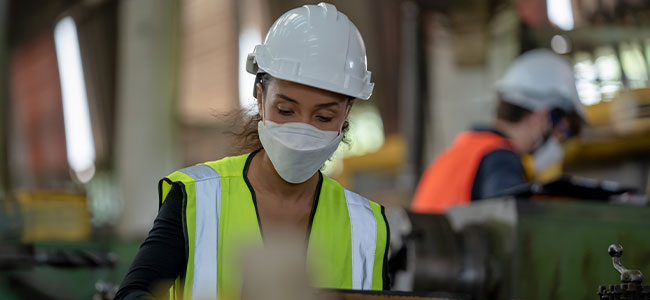
Pandemic-Proofing Our Air: How Standard 241 Makes Indoor Air Safer
How a game-changing health standard strengthens protection against airborne viruses. ASHRAE’s recently released Standard 241 serves as a helpful reference for minimum safety standards in various buildings and spaces.
- By M. Elaine Dasti, Tom Burgess
- May 01, 2024
In the early days of the pandemic, a patient at a local physical therapy clinic noted the impressive measures taken to ensure infection control and how it made her more comfortable. Physical therapy involves a lot of close contact, and given the effects of the pandemic, the office was doing its best to make patients feel comfortable. They put up signs explaining the enhanced filtration in their HVAC system; there were UV disinfection lights by the ceiling and other air and surface disinfection practices.
The physical therapy group was not alone in trying to protect their staff and customers during the pandemic. In their case, they tried a combination of technologies, hoping it would work and make people feel safer. However, the pandemic illustrated the need for standards to be implemented to ensure that proper equipment has been tested and is ultimately effective. Without safety and health measures, employees and clients are subject to unsafe and unhealthy environments that can endanger them. Standards for infection control equipment provide protection against public health issues such as the COVID-19 pandemic.
A New Standard Arises
The COVID-19 crisis revealed that health and safety measures put in place to fight against airborne viruses were not up to the challenge of a pandemic. Guidance on how to keep employees and clients safe in the face of the crisis was continually evolving as we learned more about the virus and its controls. Sales of equipment like air purifiers and disinfection methods grew substantially and were often used with hope more than data on effectiveness.
For companies such as T&M Associates working to mitigate infection risks through new programs or technology, we were often met with limited available data. A new standard was necessary, and on March 31, 2020, ASHRAE, a professional association otherwise known as the American Society of Heating, Refrigerating, and Air-Conditioning Engineers, formed its Epidemic Task Force (ETF). After realizing just how ill-prepared the industry was in mitigating COVID-19 and other airborne virus transmissions, ASHRAE began working on standard measures and solutions.
In July 2023, ASHRAE released Standard 241, Control of Infectious Aerosols, providing specific directions on controls for airborne viruses. Though the Standard is not a regulatory requirement, it serves as an industry reference to be adopted for minimum safety standards around indoor air quality in various buildings and spaces (e.g., schools, hospitals, residential homes), separate from laboratories and health facilities.
This article originally appeared in the April/May 2024 issue of Occupational Health & Safety.